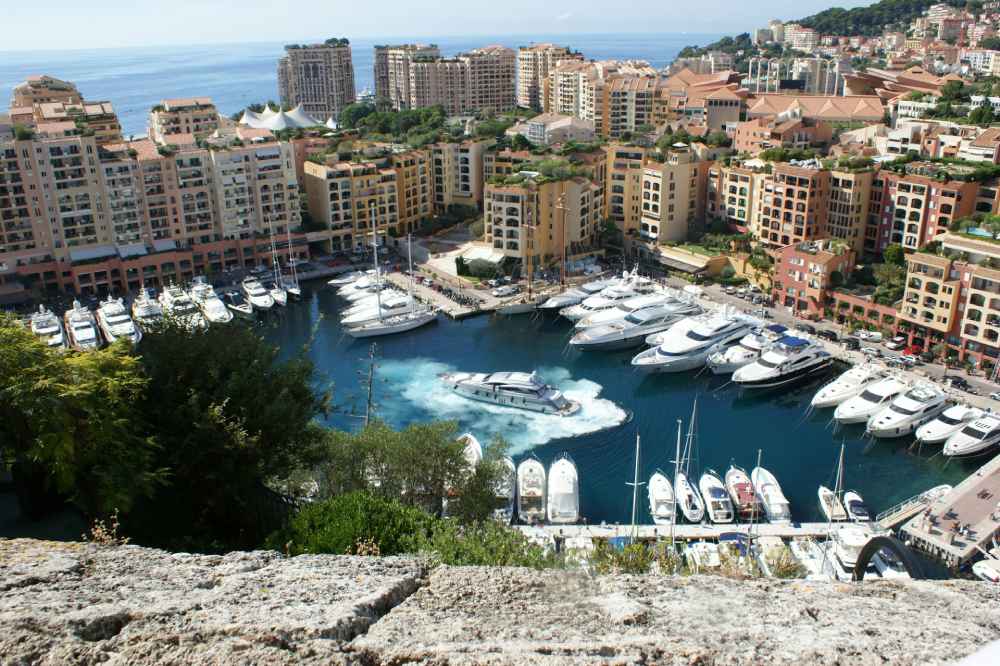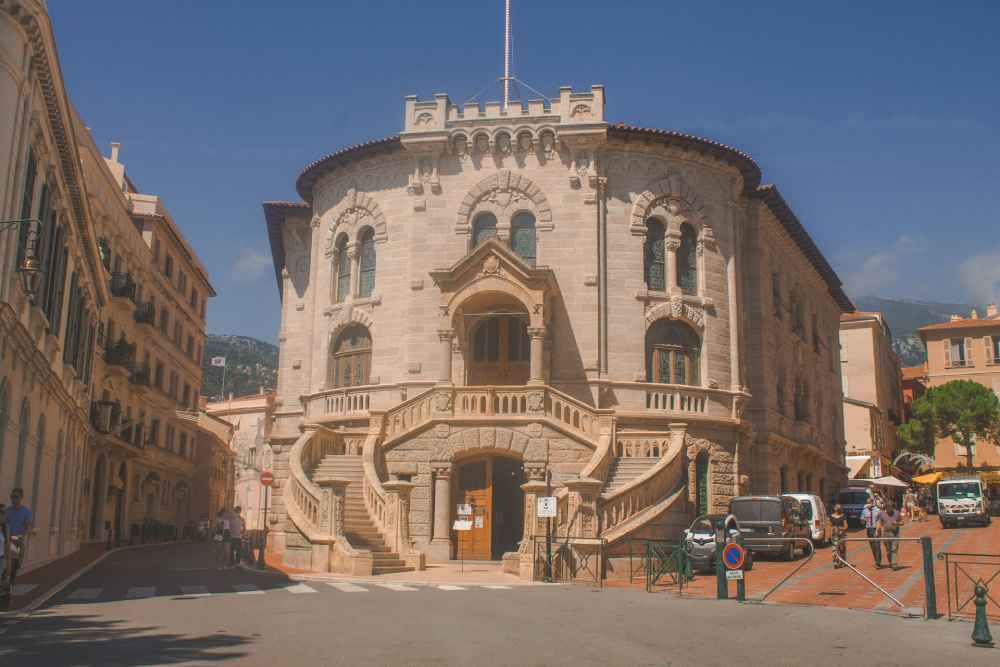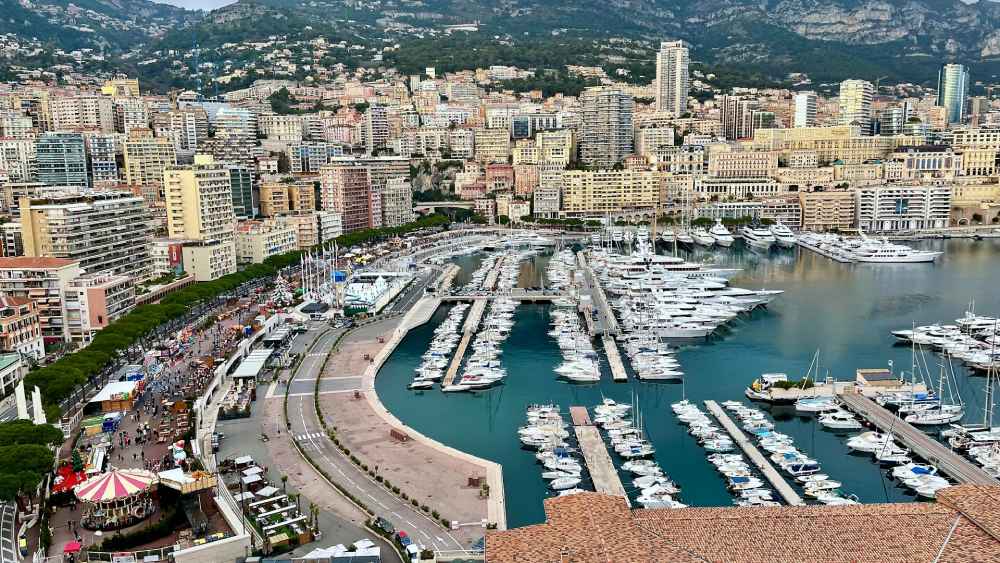In terms of landmass Vatican City might be the world’s smallest country, but Monaco claims the second spot. This glamorous Mediterranean principality is so compact that New York’s Central Park could contain it almost four times over.
Monaco’s tiny sovereign territory spans just 0.78 square miles (2.02 square kilometers), yet it stands as proof of how a small nation can become a global powerhouse. The principality ranks among the world’s wealthiest nations per capita, which makes it a captivating example among diminutive countries worldwide.
This piece delves into Monaco’s remarkable position as our planet’s second smallest nation. We’ll uncover the principality’s history, governance systems, and daily rhythms, plus the economic forces that helped this micro-state become synonymous with luxury and prosperity.
Contents
- 1 Discovering Monaco: The World’s Second Smallest Nation
- 2 The History Behind Monaco’s Small Size
- 3 Governing a Tiny Territory
- 4 Life in a Micro-State
- 5 Monaco’s Economic Power
- 6 Conclusion
- 7 What is the Second Smallest Country in the World Frequently Asked Questions
- 7.1 Is Monaco the second smallest country?
- 7.2 Where is the 2nd smallest country in the world?
- 7.3 Is Monaco the 2nd richest country?
- 7.4 Which country is smaller than Monaco?
- 7.5 Is Monaco French or Italian?
- 7.6 Is Monaco smaller than New York City?
- 7.7 Why is Monaco so rich?
- 7.8 What is Monaco famous for?
Discovering Monaco: The World’s Second Smallest Nation
Monaco fascinates visitors with its unique blend of luxury and compact charm along the stunning Mediterranean coastline. This tiny principality sits snugly on the French Riviera, just 9 miles east of Nice and 5 miles from the Italian border.
Key facts and statistics
The principality’s statistics reveal a remarkable story of concentrated prosperity. This microstate covers just 2.02 square kilometers and houses an impressive population of 38,485 residents. Monaco stands as the world’s most densely populated sovereign state, with 25,927 people per square kilometer.
Monaco’s residents enjoy exceptional longevity. Men live to 85 years while women reach 93 years on average. The population remains entirely urban, with 100% of residents living in developed areas.
Geographic location and borders
Monaco’s geography combines stunning views with strategic positioning. France surrounds the principality on three sides. A beautiful Mediterranean coastline stretches 4.1 kilometers. The territory spans densely clustered hills and a headland overlooking the azure Mediterranean waters.
The country has four distinct sections:
- Monaco-Ville – the historic old city on a rocky promontory
- La Condamine – the bustling port area
- Monte-Carlo – the main residential and resort district
- Fontvieille – a modern area reclaimed from the sea
Comparison to other micro-states
Monaco holds a unique position in European politics as a microstate. The principality maintains special relations with the European Union through agreements with France, despite not being a member. It participates in EU customs and border controls, demonstrating how small nations can preserve sovereignty while integrating with larger political structures.
The World Bank and IMF define microstates as nations with populations under 200,000. Monaco fits this category comfortably. Its remarkable economic strength sets it apart from other microstates, built on banking, tourism, and light manufacturing.
Recommended Read: 10 Smallest Countries in The World
The History Behind Monaco’s Small Size
Monaco’s remarkable journey to becoming the world’s second smallest country started with a dramatic change in its borders. The principality covered only 145 hectares in 1861, but smart expansion projects helped it grow to 202 hectares by 2005.
Origins of the principality
The story of Grimaldi dynasty began in 1297 when François Grimaldi, known as “Malizia,” took control of Monaco’s fortress. Their power grew steadily and by 1341, they expanded their territory by buying the nearby towns of Menton and Roquebrune.
Historical territory changes
The year 1861 marked a turning point in Monaco’s territorial history. The principality lost about 95% of its territory when Menton and Roquebrune were given to France for 4.1 million francs. This change shaped Monaco into the small nation we see today.
Rise to modern micro-state
Monaco found a creative solution to its space problems since it couldn’t expand into France – it grew into the Mediterranean Sea instead. The principality has completed five major land reclamation projects since 1880, adding more than 40 hectares to its territory. These projects are the foundations of Monaco’s development, and reclaimed land now makes up more than 20% of the country’s total area.
Mareterra, the latest expansion project, shows Monaco’s steadfast dedication to growth by adding six more hectares. These developments have given the world’s second smallest country new spaces for:
- Public services
- Modern housing
- Business zones
- Places for recreation
Monaco’s journey from a medieval fortress to a modern micro-state shows how well it adapted and thrived despite limited space. Smart planning and innovative engineering helped this tiny principality use every square meter effectively, creating a perfect mix of history and modern development.
Governing a Tiny Territory
Monaco’s unique approach to running one of the world’s smallest nations shows that size doesn’t limit sophistication. This tiny principality works with a well-laid-out system that perfectly balances traditional monarchy with modern governance.
Monaco’s political system
Prince Albert II sits at the helm of this micro-state and guides Monaco’s constitutional monarchy that’s 112 years old. The Prince works alongside several core institutions to create a balanced governance structure. A Minister of State heads the executive branch with a five-member Council of Government. The system becomes even more interesting as the Prince and National Council share legislative power. This 24-member body gets elected by citizens every five years.
Administrative divisions
Monaco works as a single municipality, unlike larger nations with multiple regions. This makes it one of the most efficient administrative systems worldwide. A 15-member Communal Council manages the city’s affairs. The voting system here stands out – each voter gets fifteen preference votes. The principality splits into traditional quarters:
- Monaco-Ville – The historic old town
- La Condamine – The port district
- Monte Carlo – The main residential area
- Fontvieille – The modern reclaimed district

International relations
Monaco holds an impressive diplomatic presence even though it’s the second smallest country globally. The principality became a UN member in 1993. Its bond with France deserves special mention – a friendship treaty from 2002 boosted Monaco’s sovereignty while keeping close ties.
The principality’s influence reaches way beyond its size. It maintains ten diplomatic missions in Western Europe and permanent representation at the UN. Monaco’s global reach shows in numbers – seventy-four countries have consular presence or accreditation here. The principality took a big step forward by creating its Ministry of Foreign Affairs in 2005.
The sort of thing I love about Monaco’s governance is how it balances old-world sovereignty with modern international cooperation. The principality stays independent while taking part in many international organizations like UNESCO and the World Health Organization. This proves that even the world’s second smallest country can shape global events.
Life in a Micro-State
Monaco offers a remarkable way of life where space optimization meets luxury living. Residents of the world’s second smallest country experience a lifestyle where every square meter creates a story of smart urban living.
Population density
This tiny Mediterranean paradise packs 25,927 people into each square kilometer. Monaco stands as the most densely populated sovereign state worldwide. The principality brings together more than 130 different nationalities. About one-third of its residents are millionaires. This creates a rich social tapestry where luxury and diversity blend naturally.
Key population characteristics include:
- A life expectancy of 87 years, one of the world’s highest
- Over 75% of residents born outside the state
- A population of 38,485 as of 2024
Urban planning challenges
Space limitations push Monaco’s urban planners to think creatively. They must balance new development with residents’ quality of life. The principality spans just 2.08 square kilometers. This tiny footprint requires smart solutions for housing and public spaces.
Projects like Mareterra show how Monaco tackles urban expansion. This bold initiative added six hectares to the principality’s territory. It proves that even the second smallest country can grow through smart engineering and careful planning.
Infrastructure solutions
Monaco tackles its space constraints with infrastructure that makes the most of every meter. The principality runs one of the most advanced urban monitoring systems. Round-the-clock video surveillance covers the town. It maintains the highest ratio of police officers globally – one officer for every 80 residents.
Monaco welcomes innovative technology to improve urban living. It became the first country with complete 5G coverage. This set new standards for digital infrastructure in micro-states. The principality developed clever solutions for basic services. These include an underground pre-treatment station for wastewater and a smart pneumatic waste collection system.
Today’s Monaco shows how the world’s second smallest country overcomes space limitations through innovative technology and smart planning. The principality’s steadfast dedication to infrastructure development gives residents an outstanding quality of life in this compact yet well-organized micro-state.
Monaco’s Economic Power
Monaco proves that powerful things come in small packages, despite its tiny footprint. The world’s second smallest country has built an impressive financial system that rivals many larger nations.
Banking and finance sector
Monaco’s banking world is remarkably dense. The country has about 30 banks and 60 financial management companies within its compact borders. The principality’s combined banking assets in 2015 were 8.42 times larger than its GDP. This showcases its outsized financial influence.
Private banking and wealth management are the banking sector’s specialties. These services cater to an elite international clientele. Non-resident clients from Europe, sub-Saharan Africa, the Middle East, Latin America, and Asia-Pacific own about 42% of the industry’s assets. Monaco’s concentration of financial expertise makes it a preferred destination for Ultra High Net Worth and High Net Worth individuals who need sophisticated banking services.
Tourism industry
Tourism is the life-blood of Monaco’s economy and adds substantially to its annual revenue. The principality drew 340,000 visitors in 2023, and tourism brought in about 15% of the annual revenue.

The accommodation and food service industry generated €999 million in 2023. These numbers show the sector’s substantial economic effect. Monaco managed to keep an average hotel price of €474 (excluding tax and service charges), which puts it firmly in the luxury tourism segment.
Tax policies and wealth
Monaco’s tax structure attracts global wealth through careful design. Since 1869, the principality has kept a distinctive tax policy that has several notable benefits:
- No personal income tax for residents (except French nationals)
- No wealth tax or annual property tax
- No capital gains tax
- No property council tax
- No inheritance tax for direct beneficiaries
This tax-friendly environment has created one of the world’s most concentrated wealth hubs. The principality gets substantial revenue through other means. These include a 20% VAT rate and a business profit tax for companies that generate more than 25% of their turnover outside Monaco.
The world’s second smallest country’s economic success shows in its GDP, which reached €9.24 billion in 2023. This represents a remarkable 50% growth since 2014. Such growth outpaces both worldwide (27%) and eurozone (14%) averages during the same period. Size isn’t everything when it comes to economic power.
Conclusion
Monaco shows how a tiny territory can become a global powerhouse. This second smallest country in the world has turned its 2.02 square kilometers into one of the planet’s most prosperous nations. Luxury and innovation blend perfectly at every corner of this small state.
This principality’s success extends well beyond its glamorous image. Smart urban planning, strong governance, and strategic economic policies have created an environment where residents enjoy an exceptional life. The statistics paint an impressive picture. Monaco boasts the world’s highest life expectancy and has one of the highest concentrations of millionaires globally.
Size doesn’t determine a country’s influence – vision and execution do, as Monaco clearly demonstrates. This Mediterranean gem keeps redefining the limits of possibility. It expands its territory into the sea while maintaining its status as a global financial hub. Monaco’s story teaches countless lessons about turning limitations into advantages, especially for those interested in small nations’ outsized effects on the world stage.
What is the Second Smallest Country in the World Frequently Asked Questions
Is Monaco the second smallest country?
Yes, Monaco is the second smallest country in the world. It is only slightly larger than the Vatican City, which holds the title of the smallest country. Despite its small size, Monaco is famous for its wealth and luxury.
Where is the 2nd smallest country in the world?
The second smallest country in the world is Monaco, located on the Mediterranean coast in Western Europe. It borders France and is known for its glamorous lifestyle, casinos, and beautiful coastline.
Is Monaco the 2nd richest country?
Monaco is often considered one of the richest countries in the world, although it is not the second richest. Its high GDP per capita and wealthy residents contribute to its reputation as a haven for the rich and famous, largely due to its tax laws and luxury real estate.
Which country is smaller than Monaco?
The country smaller than Monaco is Vatican City. Vatican City is an independent city-state enclaved within Rome, Italy, and holds the title of the smallest country in the world by both area and population.
Is Monaco French or Italian?
Monaco is not French or Italian, but it has strong historical and cultural ties to both countries. It is a sovereign city-state, with French being the official language, though Italian is also widely spoken due to its proximity to Italy.
Is Monaco smaller than New York City?
Yes, Monaco is smaller than New York City. Monaco covers about 2.02 square kilometers, while New York City spans approximately 789 square kilometers, making Monaco significantly smaller.
Why is Monaco so rich?
Monaco is so rich due to its favorable tax policies, luxury tourism, and the presence of wealthy residents and investors. The country’s economy is also boosted by industries like banking, real estate, and casinos, which attract affluent individuals from around the world.
What is Monaco famous for?
Monaco is famous for its luxury, glamorous lifestyle, and attractions like the Monte Carlo Casino and the Monaco Grand Prix. The country is also known for its tax advantages, making it a popular destination for wealthy individuals, and for being home to the royal Grimaldi family.





